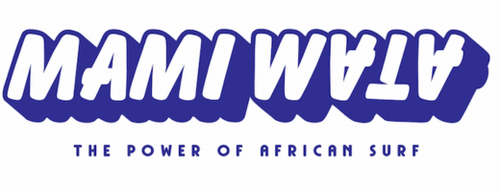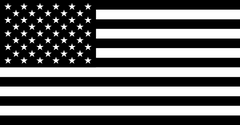SPRING SUMMER ‘22: NEO-ANIMISM - LUCK IS ALIVE LOOKBOOK
Mami Wata X Pieter Hugo
A photographic creative collaboration.
Our Spring Summer ‘22 lookbook was photographed by renowned South African photographer Pieter Hugo.
Hugo, who lives in Cape Town, is a sometime surfer himself. His work straddles fine arts and commercial photography. Hugo is renowned for his powerful and unsettling portraits, often of outsiders or marginalized people and cultures. He usually photographs them in a way that unsettles unconsidered, voyeuristic ways of looking. A recent solo exhibition of his portraits at Rencontres d'Arles in France, titled Being Present, explores atypical ideas of beauty. His work is included in the collections of institutions such as MOMA NY, the V&A, Centre Pompidou and the Rijks Museum.
Hugo has recently shot fashion features for the likes of New York Times magazine and the US editions of Harper’s Bazaar and Vogue. He has collaborated with brands including Louis Vuitton, Bottega Veneta and Hood By Air.
The SS22 lookbook, the brand’s creative director Peet Pienaar explains, explores the concept of distortion and reflection using trick mirrors (and occasionally digital manipulation).
The concept of the collection has its roots in an animist way of relating to the world, especially as it informs surf culture in Africa. When Mami Wata produced Afrosurf, an astounding coffee-table book that assembled and documented the stories of surfers and the details of the various surf cultures in 18 coastal countries around Africa’s coastline, many African surfers testified to a spiritual connection with the ocean. Some African surfers relate to the ocean in a particularly animistic fashion. Animism involves understanding and relating to inanimate objects or entities – such as the ocean – as a sentient being possessing human qualities, such as a personality or a soul.
The design of the SS22 collection takes as its starting point the way in which animism in contemporary West African cities influences graphic design. In the Senegalese city of Dakar, for example, it is not uncommon to see images of eyes adorning buses and motorcycles to indicate a humanized or spiritualized conception of them. Mami Wata’s designs build on and extrapolate such prompts they find in animistic-inflected visual cultures.
The image of the eye in various permutations is central to the Mami Wata SS22 collection, as are various graphic representations of dice, which indicate luck, a proxy for an animistic sensibility. The collection’s slogan is, “Luck is Alive”.
Speaking of the concept behind the use of distortion and reflection in the photo shoot, Pienaar explains that it is a way of representing how, as a surfer, you might “see yourself within the ocean”.
“It's almost as if seeing yourself reflected in a wave transfers a kind of sentience and a spiritual quality to the idea of a wave,” he says.
Distortion also conveys a sense of movement and transformation, which relates to the spiritual effect the ocean has on many African surfers.
Pienaar also points out that mirrors have a strange kind of power in all kinds of contemporary cultures: It’s where you go to “see yourself”, as he puts it. Mirrors reveal an image of ourselves, but simultaneously take us out of our bodies. Distorted reflections, such as those we see in circus mirrors, further complicate the idea of a self-image or reflection. We find ourselves transformed and defamiliarized, not unlike the way surfers might find themselves in the ocean, but somehow transformed.
Below is a conversation between Pienaar and Hugo in which they discuss visual culture, the relationship between art and fashion, surf culture, popular culture and their creative processes.
INTERVIEW:
Peet Pienaar: Photography or image creation plays a massive role in the history of popular culture and fashion. Over the past few years, we have seen brands collaborating with artists, often printing artworks on clothing. This phenomenon tells us two things: fashion wants to be seen as art, and art needs a broader audience. If you agree, why do you think fashion wants to be more like art? And why do you think art needs a broader audience?
Pieter Hugo: To me, they are essentially the same thing, but are digested at very different paces. Ideally, art forces one to slow down. It disrupts the normal rhythm of looking. Fashion is the opposite. Fashion is fast. Fashion is constant metamorphosis. I personally enjoy tapping into both veins. Whether one is working [towards an exhibition] in a white cube or towards a campaign deadline, there are always constraints. The trick is to keep the authorship genuine.
PP: Someone once told me that the way to look at Pieter Hugo’s photographs is to imagine them in 50 or a hundred years’ time. What will you think of them then? That comment had an effect on my own creative work. Now, I often ask myself, “Will this age well?” It’s an impulse that seems at odds with the fast pace of fashion. What are some of the things that guide you to the point at which you feel you are happy with an image?
PH: It’s difficult to define. It’s such an intuitive process for me. With personal work, one often has the luxury of being able to look at it over and over and over again. And then revisit it again later before it goes out into the world. With fashion, [each decision] is much more of a snap judgment. But the two disciplines complement each other. One is an immediate response; the other more considered. I definitely feel that the need to make snap judgements within the fashion world has helped me to trust my instincts when it comes to editing my personal work. But I digress. To come back to your question: honestly, there are so many factors, and they vary all time. I am never completely satisfied with the results. I always feel an image could have been better. I feel work is resolved when I start looking at the world in a new way: when [my sense of] curiosity and possibility in my previous work [starts to fade and it] feels ‘mundane’.
PP: Do categories such as art, fashion or pop culture matter to you?
PH: The boundaries don’t really bother me. Do they even exist anymore? Rather, [what bothers me is] the culture associated with those respective genres, whether it is the supposed ‘vacuousness’ of fashion or the ‘elitism’ of art.
PP: I like this reminder that categories only matter if you are really interested in them. For people who really care about fashion, a top fashion store is as important as a top museum is for people who are really into art. The same applies to sport or music. It is good to have categories, but it is also important to be able to play in different areas at the same time. Do you think there is still such a thing as Zeitgeist? What do you think defines the spirit of the present moment?
PH: Something I see in kids these days is a multi-disciplinary ethos; a belief that you can do anything yourself. You can be a DJ, a graphic designer, a model, a baker … all at the same time. [There is] much less specialization than [there was in] the past. Obviously, there are positives and negatives to this. Technology has enabled people to do things that would have previously been unaffordable or impossible. Strangely enough, the world has also become so much more fractured and polarized, which seems contrary to a multi-disciplinary spirit.
PP: One of the things that makes me happiest is when I create something – an image, a design, a film – that I want to share. I felt that way about this project. What is your motivation for doing shoots like this?
PH: Working on projects like this has such a different energy to when I’m making more personal work. With this, we work as a team: all of us doing our best to achieve the highest quality we can with whatever resources we have at hand. With my personal work, the rhythm is slower and the pursuit more solitary. But I love both. They feed into each other. As I get older, I have allowed myself to start feeling proud of my work. I am proud of this collaboration.
PP: Let’s talk about surfing. You surf. When, how and with whom did you learn to surf?
What do you get from surfing?
PH: I started surfing at age 12 when I got a surfboard for Christmas. I grew up next to the ocean. I go through phases with surfing. A few years ago, I could surf in the middle of the city and there would be no one in the water. That has all changed. More people are enjoying the sport and its culture, which is wonderful. The flip side is that the line-ups are way more crowded. These days, I tend to make a day of going surfing. I’ll head to spots that are crowd-free. I love the rhythm of surfing, the wait between catching waves. It’s such a pointless pursuit. There’s something truly anarchic about sneaking away from work to do something that is so beautifully pointless. I’ve never paid much attention to professional surfing.
PP: I love that… “beautifully pointless”. There are so many of those things: pointless and important. Humans are fascinating. What draws you to them?
PH: Ha ha! Humans bewilder me. I’m fascinated by our capacity for both superficiality and depth.
PP: Why do you think surf culture has such a generic image at the moment?
PH: After the surf boom of the 80s, surfing never quite regained its integrity. It is shifting [again]. There is still a lot of self-conscious branding out there, but there is also authentic stuff happening.
PP: What makes something authentic?
PH: I guess it means that you stay true to your vision, that it comes from within the culture, that it is not … parasitic, but mutualistic. It wants to give something back. It wants to contribute.








